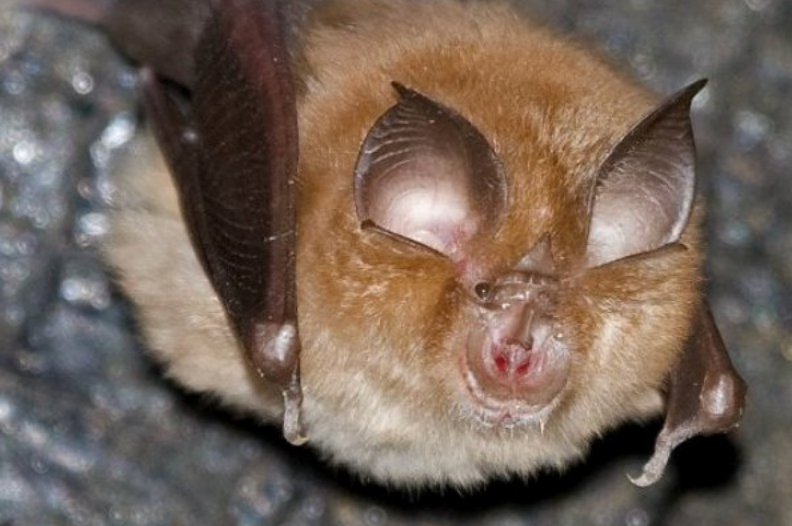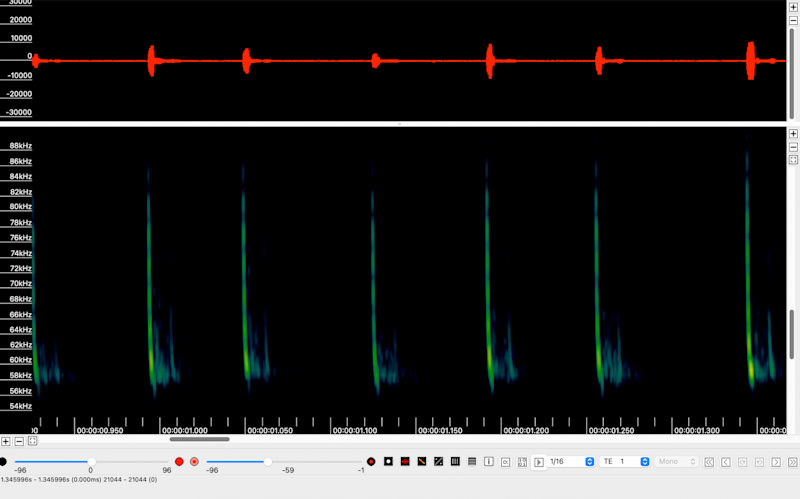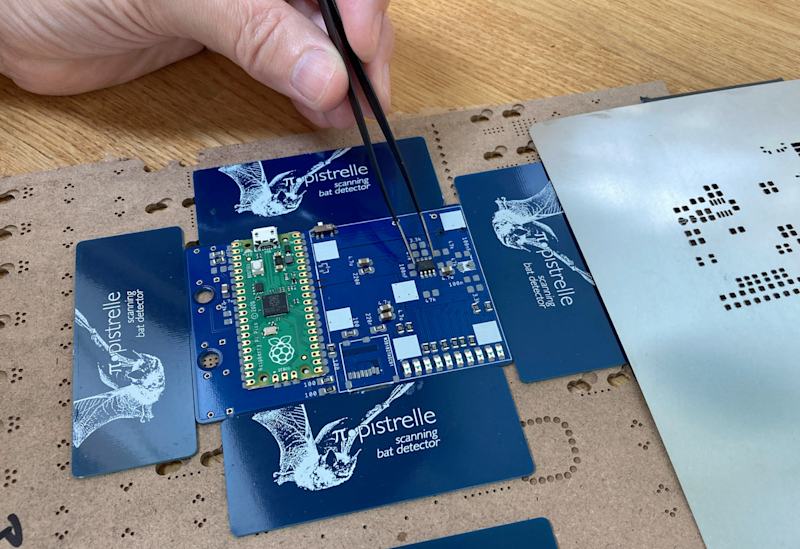Phil set about designing a method of detecting bats that did not fall foul of frequency issues. His several decades of coding experience and, in particular, his expertise in music synthesis, proved ideal when it came to designing a low-cost device based around Raspberry Pi Pico.
Tuning in
The first challenge was working out whether there were any bats around. Bats echolocate using ultrasonic frequencies, well beyond human range, but they can’t be heard and are hard to see: “uniquely for mammals, you need technology to detect and study bats,” says Phil. His approach was to have Pico’s sensors scan all the frequencies and seek out the strongest ultrasonic signal. It took him just three weeks to design a Pico-based bat detector that included an operational amp (one which amplifies weak signals), an ultrasonic microphone, a button, and enough software to detect bats and perform speech synthesis.
However, the working prototype board was “an ugly mess and too fragile to take out on surveys,” says Phil, who then turned it into both a printed circuit board and an ultrasonic recorder, adding the ability to record 384kHz/16-bit WAV files to an SD card. This extended the project’s usefulness and meant he could move on to perfecting the surprisingly challenging ultrasonic recording features. Not one to shy away from a technical challenge, Phil chose 128-bit FFTs (fast Fourier transforms) to ensure even the highest frequency bats could be detected. Pico offers exceptional functionality for its size. “Its rich feature set and programmable GPIOs meant that I needed to add the bare minimum of hardware to the design beyond the Pico,” Phil comments “while offering a combination of low cost, low power consumption and the ability to handle 100% duty cycles when processing 128bit FFTs.” This efficiency means Pipistrelle can be used as a passive recorder for four or five nights, “sleeping during the day, listening during the dark, and triggering recordings whenever bat candidate sounds are heard.” These, he likens to music.
“To hear the bats’ true calls – the bird-like whistles, the peeps, chirps, and high-pitched screams of the Horseshoes – is remarkable.”
Double duty
Two years on from his original prototype, there are now three models: BatWalk, a detector to take on bat walks; PippyG ultrasonic recorder; and Pipistrelle itself, which offers both functions. The recorder can either be used manually for on-demand recording, or set to record overnight whenever a bat call is heard. “Overnight recording lets me shut down more of the Pico to get cleaner recordings,” says Phil, an audio purist keen to banish even the slightest operational sounds of the electronics caused by the need to write to the SD card. Each of these can be bought via his Omenie website, and integrated into your bat detection project. A full bill of materials and instructions are provided.
Though he continues to tinker with the audio, Phil finally feels the project is mature enough for someone to potentially create an Android version of it (since the software is open-source) and sees its further potential for studying other ultrasonic creatures, listing cetacean research, since dolphins use ultrasound, along with small mammals and insects.







